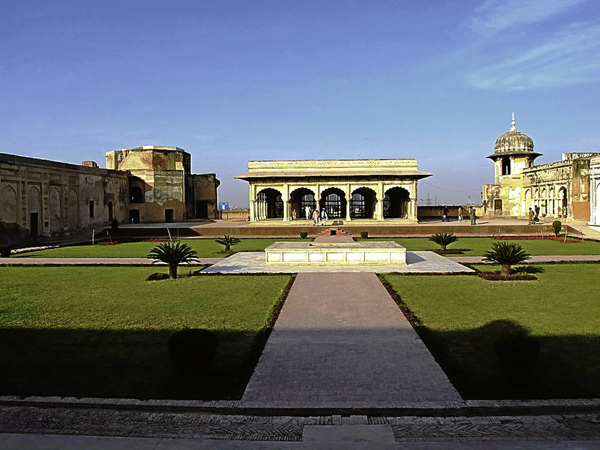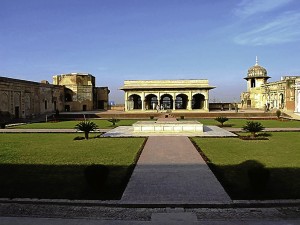
Stories are told and retold. They can enmesh a place in a net so fine that it becomes difficult to distinguish between what had transpired and what was conjured.
One such fabled place is Lahore Fort in Pakistan. The pavilions and chambers of this Mughal edifice have been the sites of so many encounters that every column seems to hold up a pediment of memories. Every tile is set in a pavement of recollections. There is even a famous Wall of Pictures with scenes of angels in flight and men clashing with swords, an unending mural of narratives.
One person who knows the stories well is my friend Rustam Khan. He had worked with the Fort’s administration for years. So, when he offered to tour me around the vast complex, I happily agreed. During our wanderings, I bit my tongue when I felt the impulse to tell my sagely guide that, back home, his name was widely associated with a more flamboyant character!
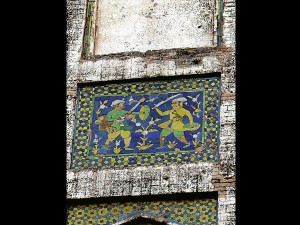
Rustam began by explaining to me that Lahore Fort wasn’t a fortress in the regular sense of the word. It was a sumptuous residence that, just like Windsor castle, was surrounded by huge walls which encapsulated kings and courtiers. It had been expanded through the centuries, resulting in an amalgam of different historical styles.
Various sagas
My first lesson was an introduction to the intricacies of brick. We were beginning with the elements that formed the basis for the structures of the Fort’s various sagas. Rustam pointed out the oldest bricks from the time of the Emperor Akbhar. These were robust, somewhat rotund, but full of the strength of earth.
Then there were the bricks from the time of Shahjahan. These were finer and more slender, reflective of a ruler whose preferences were for marble embellished with the floral motifs of Persia. Finally, there were those from the kiln put up by the British. These were flat and efficient, no-nonsense tools of Empire.
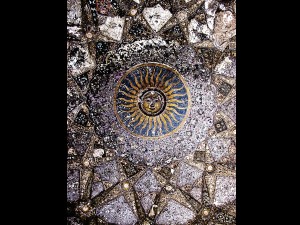
Every curve and crack had something to contribute. Rustam directed me to shapes in the midst of the shimmering mosaics of the celebrated Sheesh Mahal or Hall of Mirrors which my dazzled eyes would not have discerned. He even shared with me his pet theory that the real Sheesh Mahal was actually located in another part of the palace.
My guide noted how the suns which formed the medallions of the ceiling panels of a particular pavilion were all different, indicating the symbolism of a variety of faiths. This conveyed a conscious effort to project pluralism and tolerance, hallmarks of cosmopolitan rulers.
I was shown stone loops set into the walls for torches to light the palace at night. I also noticed smaller hooks on the perimeters of windows or doorways. These, it was explained, were for curtains. I recalled what another scholar had told me: Indian buildings like the Fort had two layers. The first was made up of stone and mortar. These formed the permanent structures which were immediately observable. But there was also another layer of colorful draperies and canopies, gossamer, ephemeral, subject to the whims of satraps and seasons.
Huge campsite
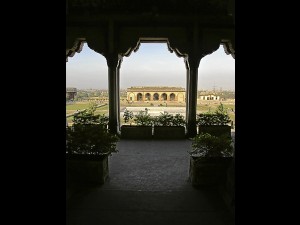
Fragments coalesced into buildings, allowing the epic to proceed. We walked through a large enclosure of lawns and orderly pathways. Rustam clarified that this was originally a huge campsite, a waiting area for the retinues of emissaries.
The pavilion where the king would have sat occupied one side of the enclosure. He would have revealed himself to his subjects from a balcony. One of the pleasures of being with my special guide was that we were allowed to enter areas which were usually off-limits, such as the hall behind the throne. This overlooked still another large space—the great quadrangle of the Emperor Jahangir.
I stood there mesmerized by my imaginings. For a moment I could hear the faint strains of music, but of course it must have come from the amusement park outside.
As we descended into the quadrangle, Rustam kept on harrying me with questions about details, about the bricks. From what epoch was this wall? He seemed pleased that I was quite game about answering.
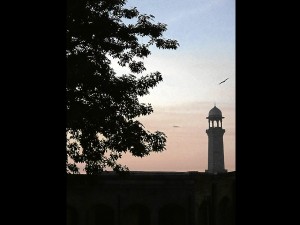
We soon found ourselves in another courtyard. Rustam asked me what this space reminded me of and then shrugged his shoulders. I suppose this was because the answer was both obvious and somewhat cliché. For the elegance and purity of this marbled expanse pointed to only one thing: The Taj Mahal, built by the grieving Shahjahan as the tomb of his wife, Mumtaz. I must admit though, that the monumentality of such devotion still made me pause.
Mnemonic device
Even while we progressed from section to section, I was beginning to feel a little anxious. Would I ever get the sequence of this procession of Mughal monarchs straight in my mind?
Fortunately, a little mnemonic device that my Asian Civilizations teacher had taught us, came to my rescue: BHAJSA. This meant, “Bread, honey, and jam suit all.” Magically, the dynastic past fell neatly into place. For “B” or Bread stood for Babur, revered founder of the line. His progeny then filed by effortlessly—and in correct order: Humayun, Akbar, Jahangir, Shahjahan, and Aurangzeb.
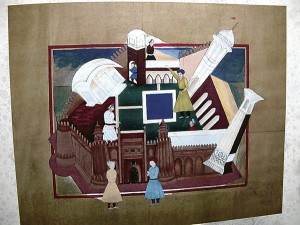
Much later, Rustam brought me to examine what seemed nothing more than a hole in the ground, albeit one that was lined with an elegant paving. Again, he became inscrutable as he quizzed me about the significance of this area at the boundary between the king’s courtyard and the harem’s quarters. Still unyielding, he nodded in the direction of an imprint on the wall which betrayed the presence of pipes long lost to corrosion. Finally he relented: We were in the former baths and the hole was actually a tub, a favorite royal locus for amorous pursuits.
Suddenly, the great Mughals were not just fierce warriors anymore. It was heartening to know that after a grim battle of conquest, they too needed a wash and a softer touch.
It was, admittedly, a lot to ponder in one afternoon. But I was unperturbed. It was a great honor to have been guided by someone whose focus on detail arose from what was clearly a deep well of insight and devotion. As we walked back to our vehicle, I saw large crowds entering, cheerfully invading what had once been forbidden ground.
Rustam again volunteered that it was a holiday and people came to sit on the grass and play. I wondered: What stories did these people tell each other about this place?
Abstract shapes
That night, shortly before I retired, something more about my tour made me smile. I recalled how, before we began our walk, Rustam had stood beneath a ceiling bracket carved in the form of an animal. He then demanded to know why similar brackets over the most important section of the courtyard had abstract shapes corresponding to no known beast or plant.
After a long time, I gingerly ventured a guess. I suggested that this abstraction may have to do with the point that the Fort was the product of a civilization which produced immense temples with ornate gates, but with innermost chambers void of decoration. My guide smiled and then allowed me to move on.
I never got around to checking with Rustam what he thought about my response. But I was happy that he bothered to continuously test me as we went about our explorations. After all, guides must always ask questions. How else would their followers figure out the way?

